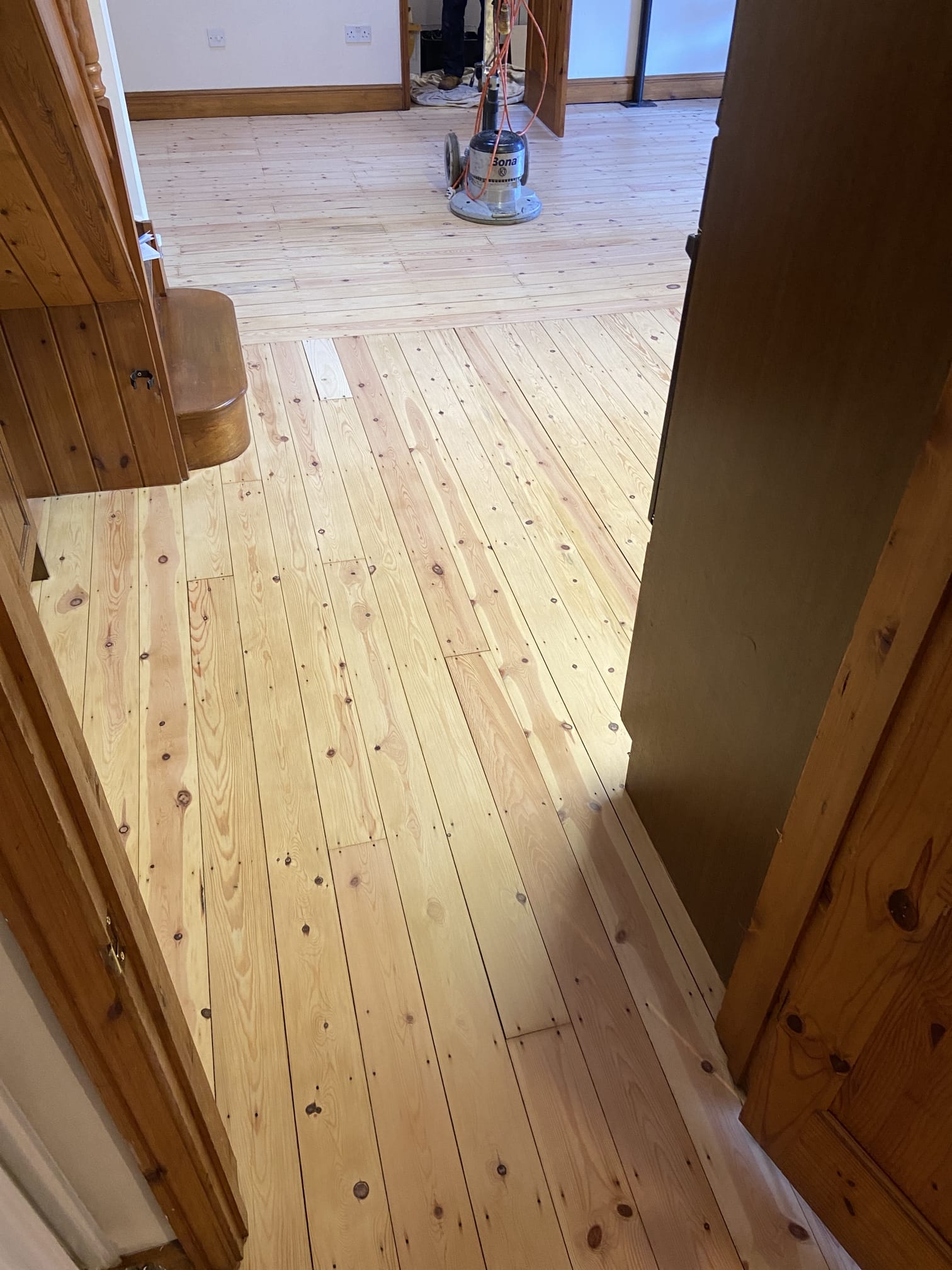“Whether you stumbled on this blog or need the answer to “Can You Repair Wood Floors After Woodworm Treatment?“… We’ll walk you through what’s involved — clearly and calmly.
If you’ve recently had woodworm treated in your home — perhaps in an older Suffolk cottage or a character-filled Edwardian semi — you might now be wondering what’s next for the floorboards beneath your feet. Can they be saved? Is it safe to sand them? And what if they don’t look the same again?
Let’s walk through what’s possible after woodworm treatment — and what to consider before committing to repair or restoration.


What Happens to Wood Floors After Woodworm Treatment?
Woodworm isn’t always the disaster people fear — especially when caught early.
In many cases, the damage is confined to the upper layer of the boards, or to specific planks. Once treated with a professional-grade woodworm solution (which kills the larvae and prevents re-infestation), the next question is whether those boards can be:
- Preserved as they are
- Restored through sanding and finishing
- Partially replaced and blended in
In Suffolk’s older homes — where beams, oak boards and pine floors are part of the charm — a thoughtful approach matters. A clean, glossy sanding job won’t always suit a 19th-century hallway. But a sensitive restoration? That can bring pride back into the space.
When Can Wood Floors Be Repaired?
Let’s separate three typical post-treatment conditions and what’s usually possible:
1. Surface-Level Tunnels or Flight Holes
These often look worse than they are. Small holes (especially in softwoods like pine) can be sanded, filled with a wood-matched compound, or left visible if a more “aged” look is preferred.
In many Suffolk homes, a light sand followed by a matt finish protects the floor without erasing its history.
2. Structural Weakness in Boards
If tapping on the boards reveals a hollow sound — or if they flex under pressure — that’s a sign they’ve lost too much integrity.
In these cases, we’ll usually recommend replacing only the affected boards, using reclaimed timber to match tone and grain.
3. Deep Pitting or Inactive Decay
After treatment, some boards may still show deep scars or crumbling edges.
These can often be stabilised with resin infill and careful sanding — but it depends on the extent and where in the room they occur.
Will the Floor Look Patchy After Repairs?
This is one of the biggest concerns our clients share — especially those with a keen eye for interior details.
We approach patch repairs with great care. Here’s how we help minimise contrast:
- We source reclaimed boards where possible — especially for pine and oak.
- We match the sanding depth so old and new sit flush.
- We use toning oils and lacquers to unify the colour.
- We test finish samples in your space before sealing the floor.
For clients in homes with character — such as period townhouses in Bury St Edmunds or rural barns outside Lavenham — we often embrace some variation. It tells the story of the house. But we never let patchwork feel accidental.
What Finish Is Best After Woodworm?
Once the boards are stabilised and prepared, choosing the right finish is key — both visually and for protection.
We typically recommend:
- Hardwax Oils for a natural, breathable finish (especially in older properties)
- Satin or matt lacquers for durability and light sheen
- Toning primers to even out contrast if new boards are involved
This isn’t about hiding the past — it’s about honouring it while protecting the floor for years to come.
“We had woodworm treated in our snug, and I was devastated thinking we’d lose the original boards. But the Art of Clean team blended in three new planks, sanded the rest, and now it feels like it’s always looked this way — just cleaner and safer.”
— Mrs Atkinson, Framlingham
Is It Safe to Sand After Treatment?
Yes — once the treatment has fully cured (usually 7–14 days), the floor is safe to sand. Our team uses low-dust sanding equipment with HEPA filtration to keep the air clean and the rest of your home undisturbed.
For clients with respiratory sensitivities or pets, we always advise:
- Opening windows during and after treatment
- Choosing low-VOC finishes
- Opting for same-day sealing to lock in the work quickly
If you’re concerned about how the treatment might affect air quality or furniture, we’re happy to walk you through options for each space.
How Long Does the Process Take?
Most floor restoration projects — including board repair, sanding, and finishing — can be completed in 1–3 days depending on:
- The size of the room
- The extent of repairs
- The drying time of your chosen finish
We’ll always provide a clear plan with timings, options, and what to expect — especially important if you’re planning this ahead of visiting family or a holiday period.
What If It’s Part of a Larger Renovation?
In homes undergoing gradual renovation — as many Suffolk homes are — we’re used to working alongside decorators, electricians, or joiners. We can:
- Schedule floor work after messy trades (like plastering)
- Protect adjacent areas
- Coordinate with your schedule — especially if you’re not living on site full-time
And if this is just one room in a phased plan? No problem. We can start with the most urgent area and revisit others later.
Want to Talk It Through First?
Whether you’re still unsure if your floors are ready — or just want honest advice before booking anything — we’re here to help.
For some, the goal is full transformation.
For others, it’s just knowing the damage isn’t getting worse.
Whichever path you’re on, we’ll walk it with you — carefully, respectfully, and with no pressure to decide until you’re ready.



